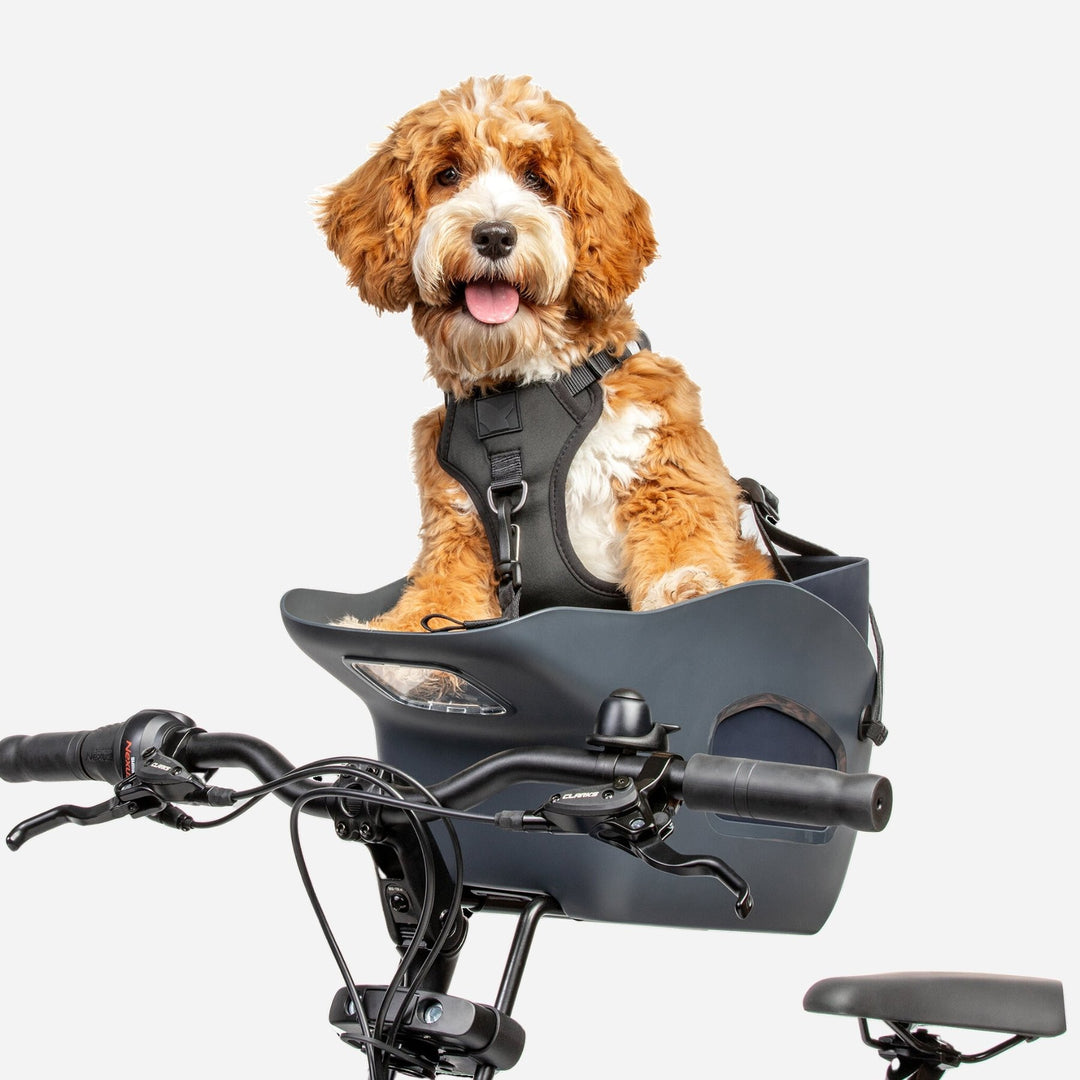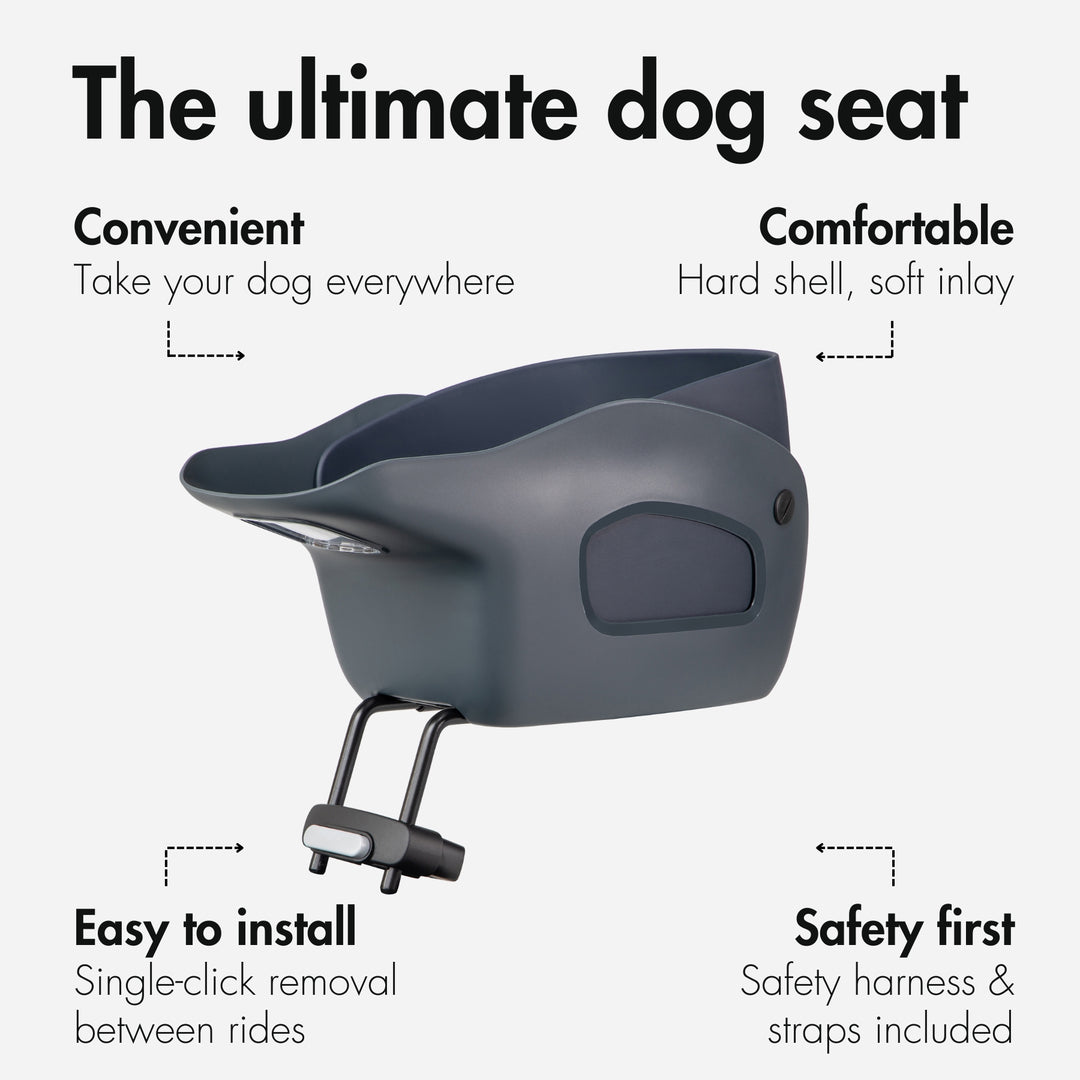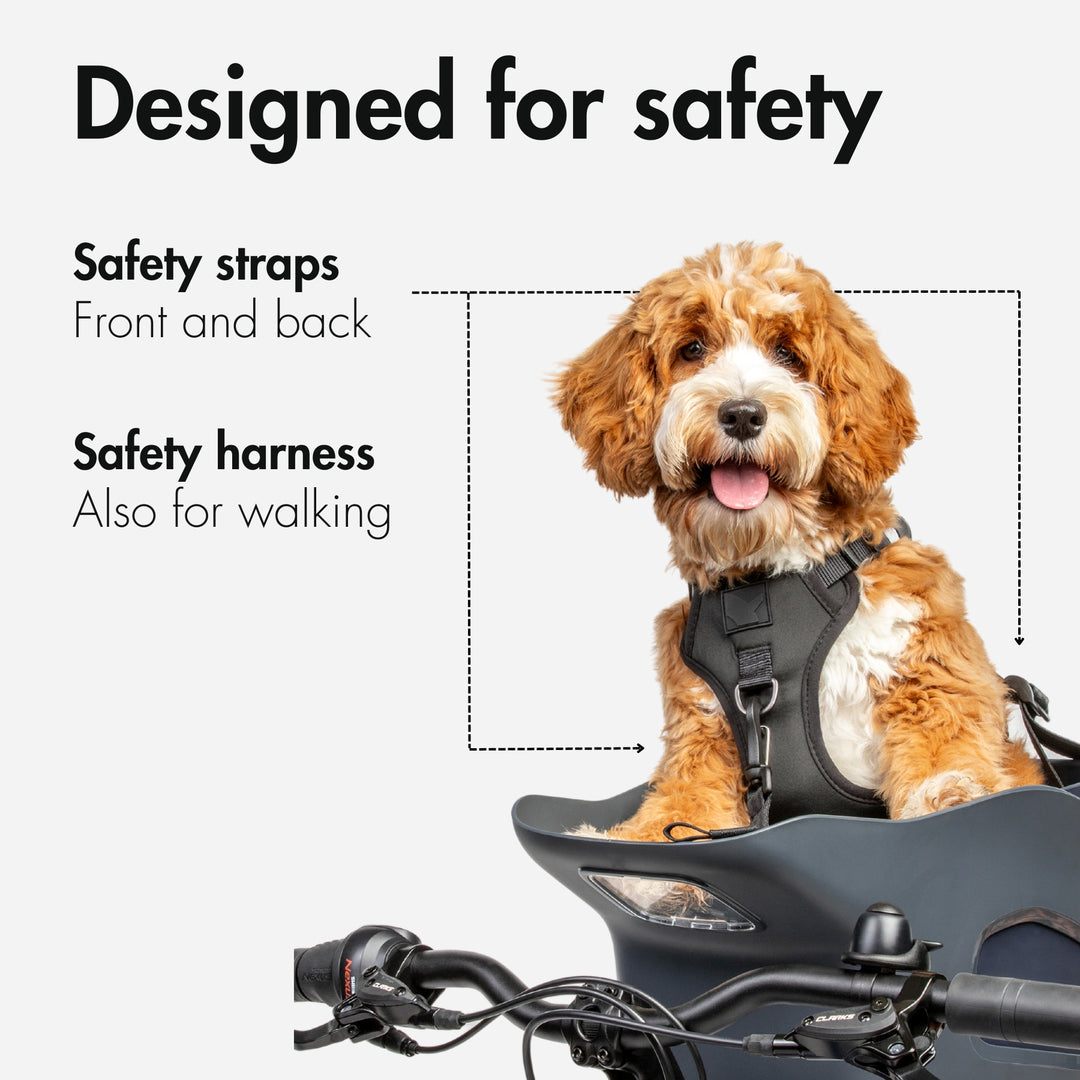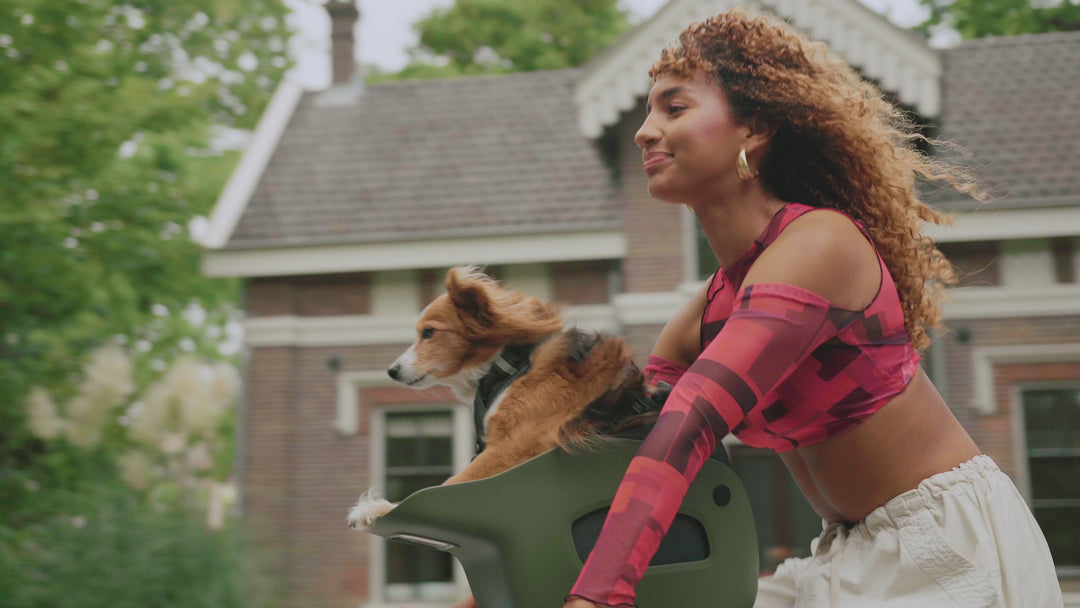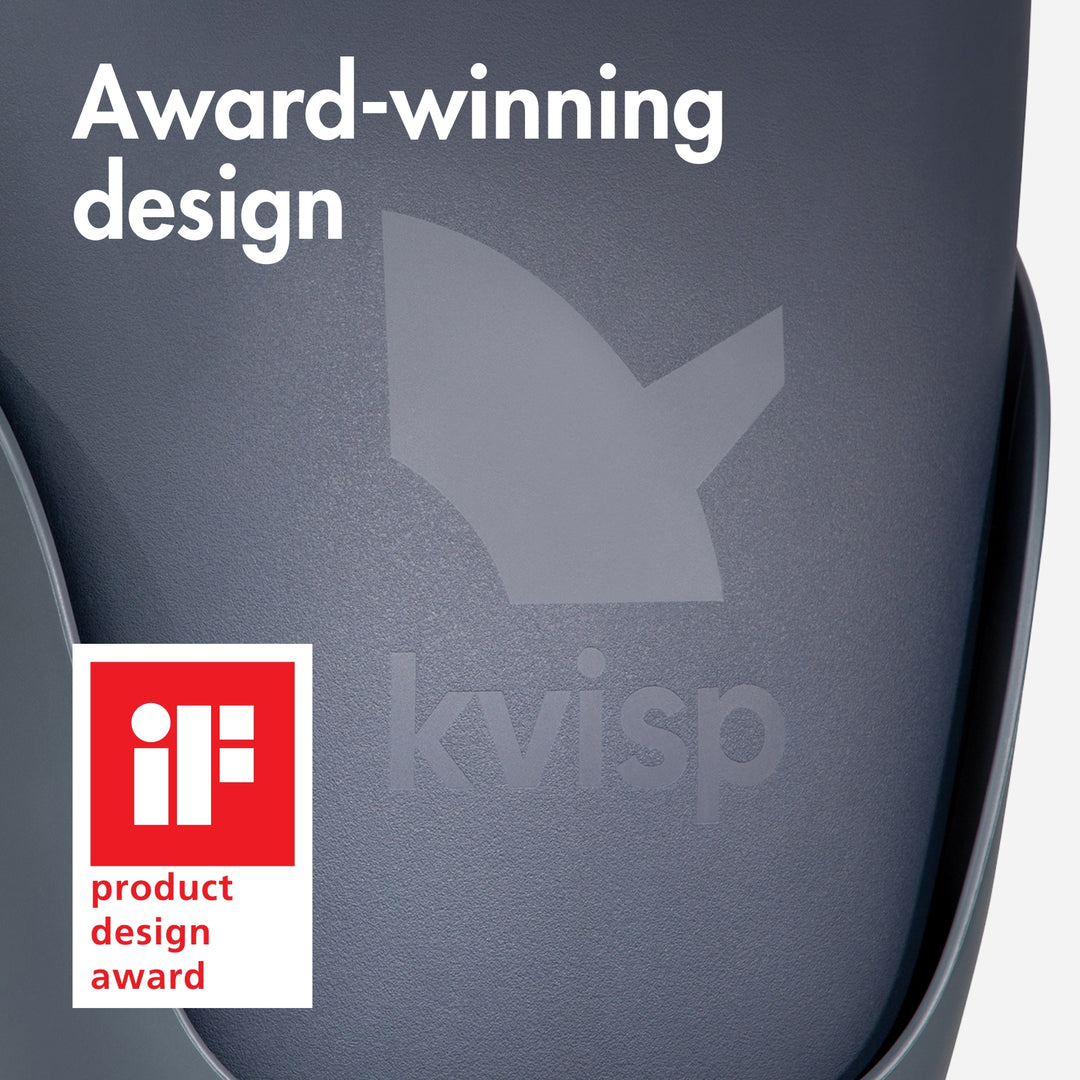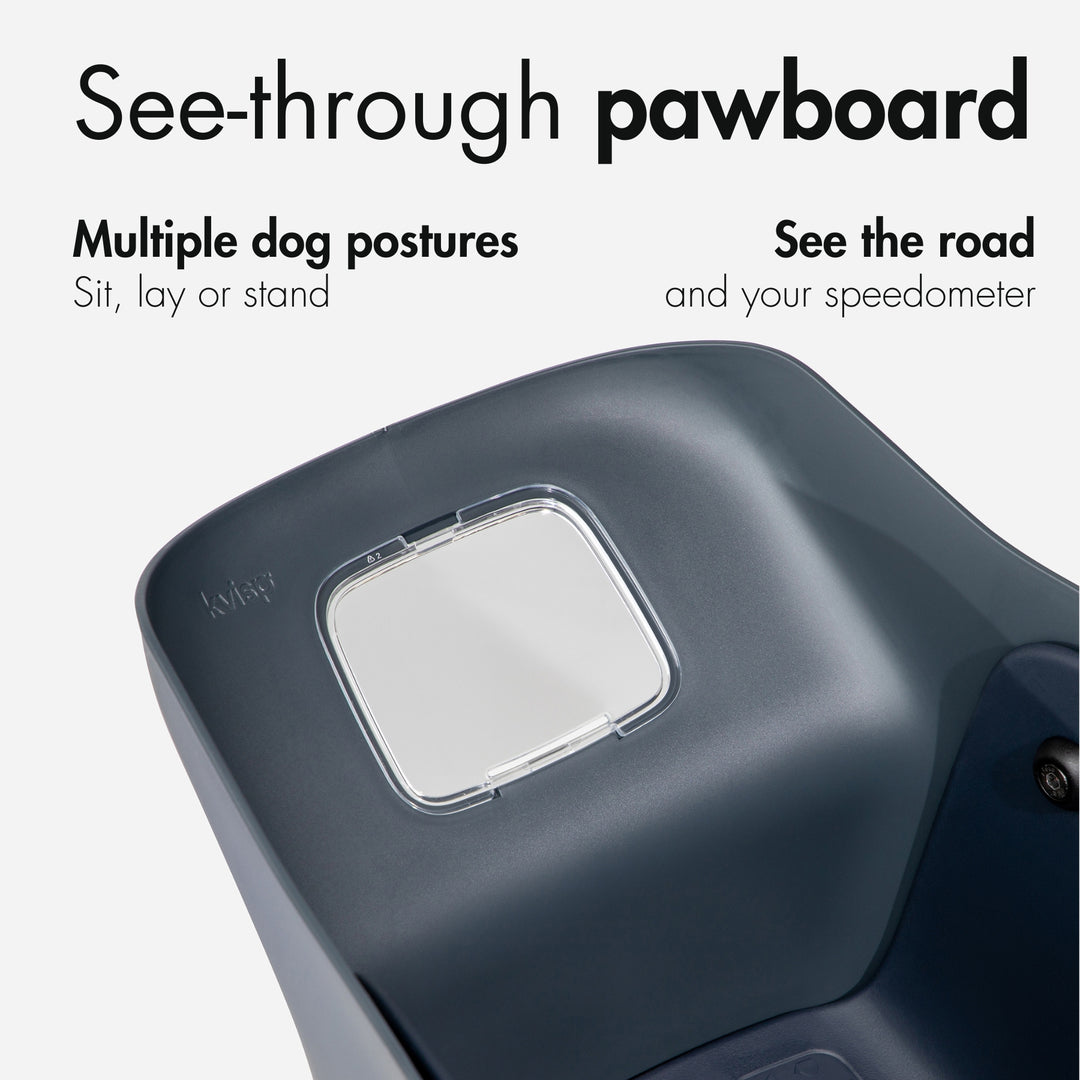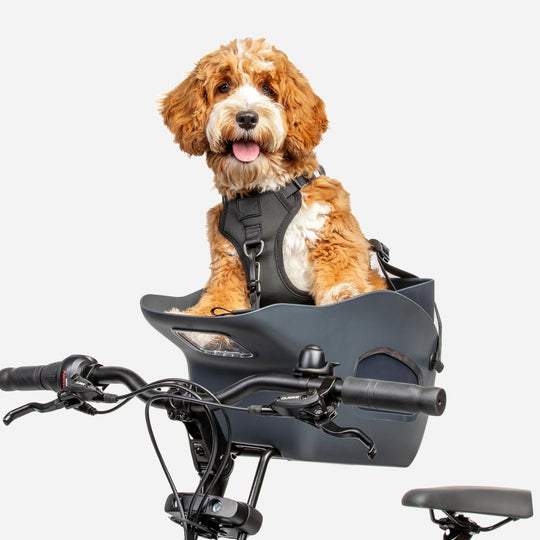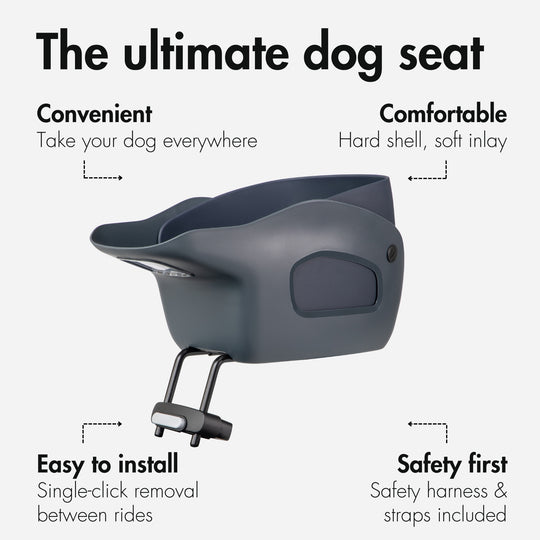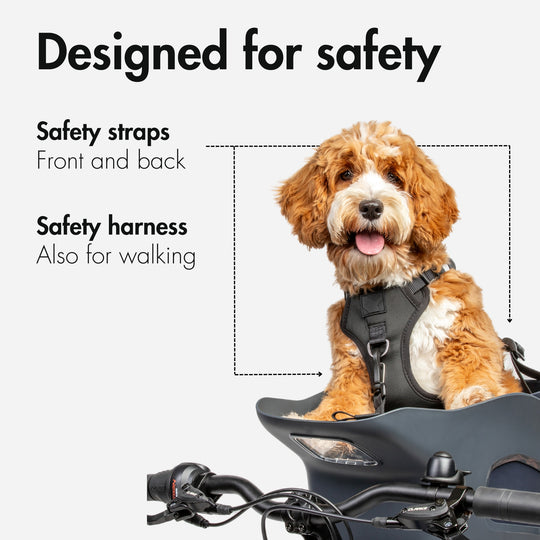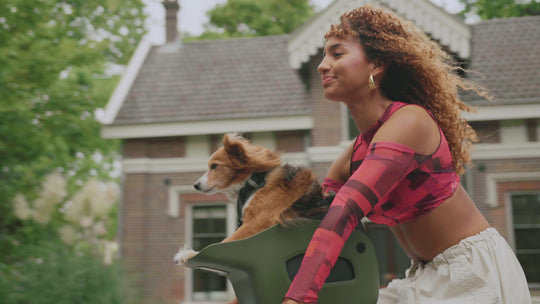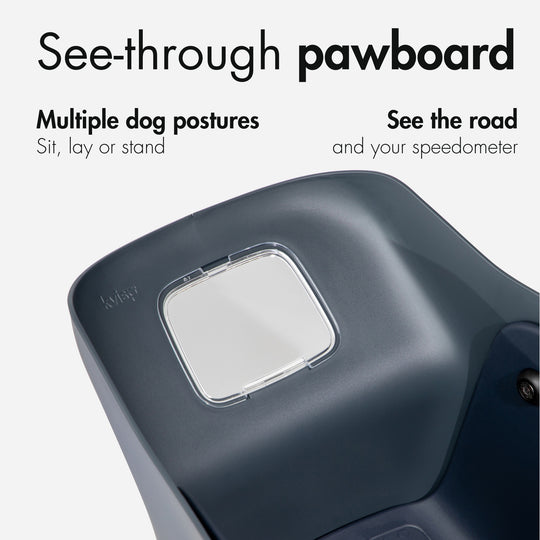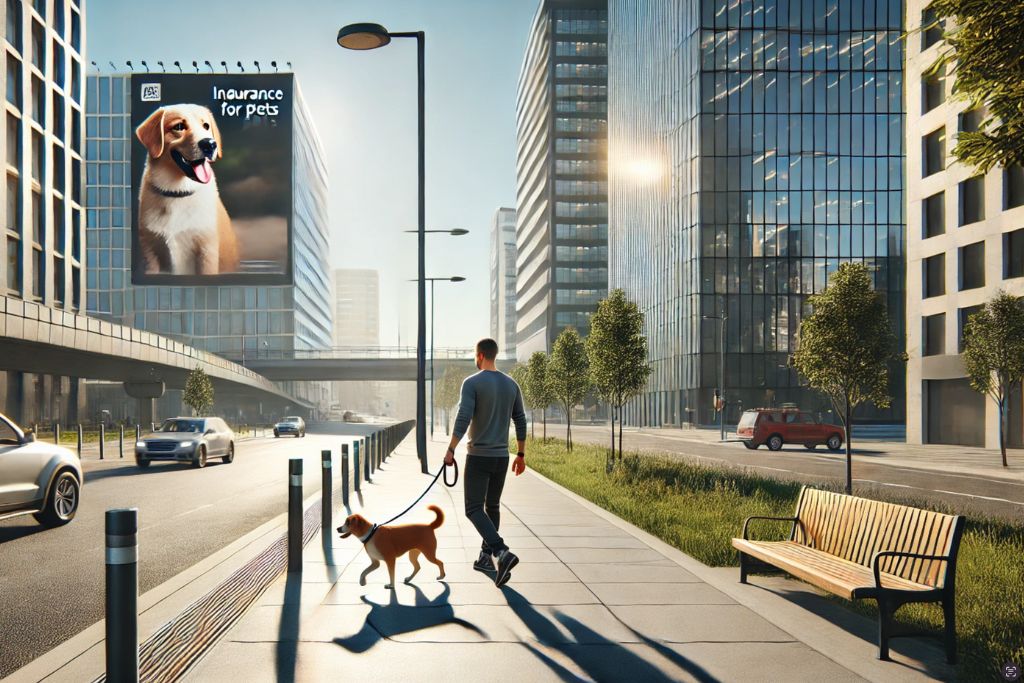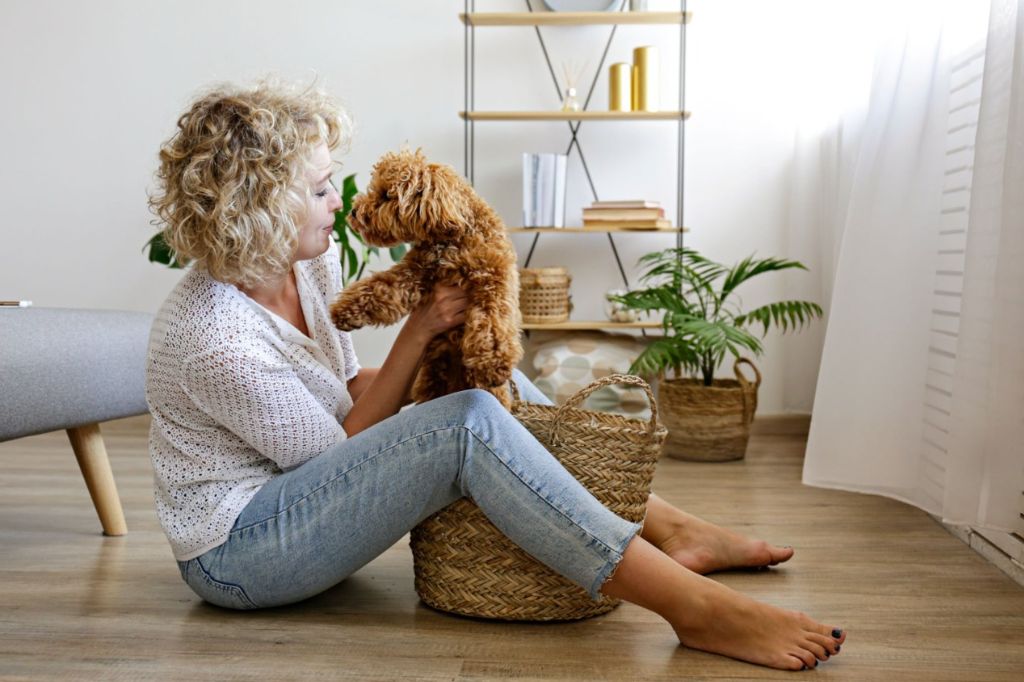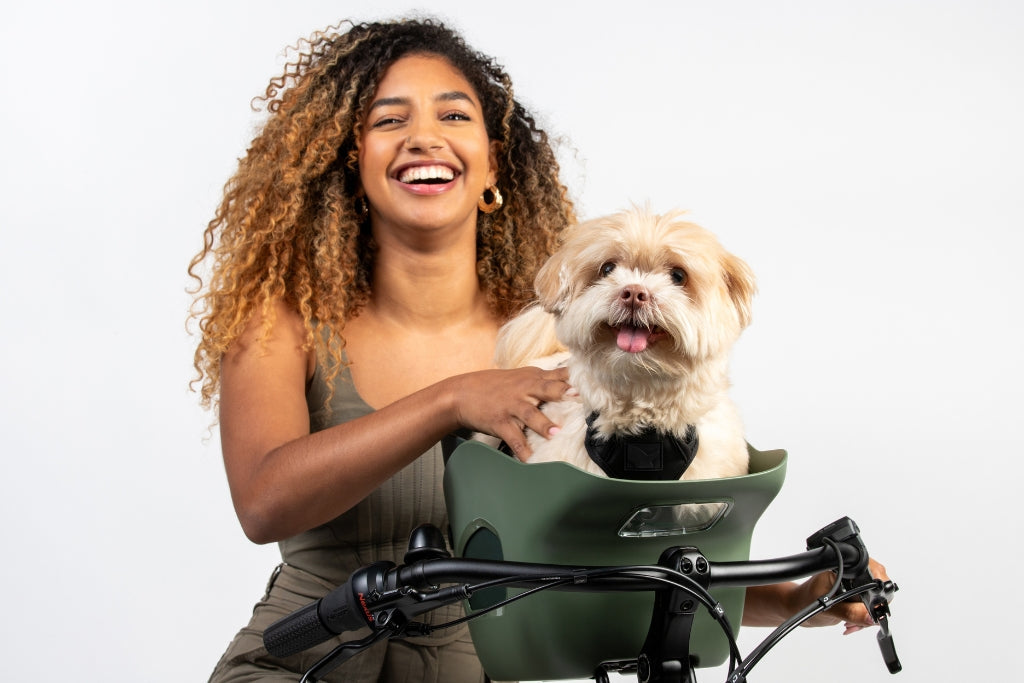How to Train Your Dog to Ride in a Bike Basket Safely
Before you even think about putting your dog in a puppy bike carrier, it’s crucial to assess whether they’re a good candidate for biking adventures. Not every pup is immediately comfortable with new experiences, and forcing them into an unfamiliar situation can lead to stress or resistance. Start by observing their personality—are they naturally adventurous, or do they get nervous in moving vehicles? Some dogs love sticking their heads out of car windows, while others prefer the stability of solid ground. If your dog is wary of new environments, you’ll need to take a slower, more patient approach.
Here are a few signs that your dog is ready for a bike ride:
-
Calm demeanor: If your dog is generally relaxed in new situations, they’re more likely to enjoy bike rides.
-
Good with car rides: Dogs that handle car trips well tend to adapt more easily to motion.
-
Enjoys being close to you: A pup that prefers to stay by your side is less likely to try jumping out of a basket.
-
Comfortable in confined spaces: If your dog enjoys cozy spaces like crates or beds, they may take to a puppy bike carrier more easily.
On the other hand, if your dog is overly anxious, reactive to loud noises, or prone to sudden movements, you’ll need extra training before they’ll feel secure in a bike basket. That doesn’t mean it’s impossible—it just means you’ll need to go at their pace.

Choosing the Right Bike Basket for Your Dog
Picking the right bike carrier is just as important as training. Your dog’s safety and comfort depend on a well-fitted, sturdy, and secure basket. A flimsy or poorly secured carrier can make your pup feel unstable, leading to anxiety or even accidents. Look for a puppy bike carrier that is specifically designed for pets, with strong attachment points, proper ventilation, and a comfortable base.
When choosing a basket, consider these factors:
✔ Size and weight capacity: Make sure the basket fits your dog’s size and weight. An oversized carrier might feel too spacious, while a cramped one will be uncomfortable.
✔ Attachment security: A wobbly carrier is a disaster waiting to happen. Look for sturdy mounting options that keep it stable on your bike.
✔ Safety features: A built-in leash clip or mesh covering can prevent your dog from making a sudden leap mid-ride.
✔ Material and comfort: A padded interior helps cushion bumps, and breathable materials keep your dog cool on warm days.
If you plan on taking regular rides, investing in a premium-quality puppy bike carrier will pay off in the long run. The right model will not only keep your dog safe but also make training and biking far more enjoyable for both of you!
Introducing Your Dog to the Basket at Home
Jumping straight into a bike ride with an untrained pup is a recipe for chaos! Before you even think about hitting the road, your dog needs time to get used to their puppy bike carrier in a safe, familiar environment. The goal is to make the basket a cozy and inviting space rather than something strange and intimidating.
Start by placing the basket on the floor and letting your dog explore it at their own pace. Toss in a favorite blanket or a well-loved toy to make it feel familiar. Encourage your dog to step inside by rewarding them with treats and praise. Some dogs will hop right in, while others may need more time. If your pup seems hesitant, try these steps:
-
Place treats inside the basket and let your dog retrieve them at their own pace. No pressure!
-
Gently lift your dog into the basket for a few seconds, rewarding calm behavior.
-
Gradually increase the time they spend inside while reinforcing positive behavior with praise.
If your pup associates the basket with positive experiences, they’ll be much more willing to sit in it when it’s attached to your bike. Take your time with this step—rushing the process can create anxiety and make future training more difficult.
Teaching Your Dog to Stay Calm in the Basket
Even if your dog is comfortable sitting in their puppy bike carrier at home, that doesn’t mean they’ll stay put once the wheels start moving! Training them to stay calm in the basket is crucial for safety and a stress-free ride.
Start by practicing “sit” and “stay” commands while your dog is in the basket. If they’re already familiar with these cues, great! If not, now’s the perfect time to teach them. Reinforce these commands with positive reinforcement—treats, praise, and belly rubs work wonders. For added security, use a safety harness clipped to the basket to prevent sudden jumps.
Another helpful trick is to get your dog used to slight movements while they’re in the basket:
-
Gently rock the basket back and forth while they’re inside to simulate motion.
-
Practice lifting the basket a few inches off the ground to mimic the feel of being on a bike.
-
Roll the bike forward slowly while standing next to it, rewarding your dog for staying still.
Once your pup learns to relax in the basket, they’ll be much more comfortable when it’s actually mounted on the bike.
Getting Your Dog Comfortable with a Stationary Bike
Before you start pedaling, it’s important to introduce your dog to the experience of sitting in a puppy bike carrier on an actual bike. This step bridges the gap between being stationary and moving, making the transition smoother.
Set your bike up in a secure area, like your backyard or a quiet driveway, and attach the carrier. Place your pup inside and let them sit for a few minutes while you hold the bike steady. This allows them to get accustomed to the height and position of the basket. If your dog is comfortable, try gently tilting the bike side to side—this helps simulate real riding conditions without overwhelming them.
Gradually, start moving the bike forward while walking alongside it. Keep it slow and controlled—this isn’t a race! Reward your dog for staying calm and engaged. If they seem nervous, pause and reassure them before trying again. The goal is to build confidence at each stage before taking it to the streets.
First Short Rides: Starting Slow and Safe
Your dog’s first real ride should be short, slow, and in a low-stress environment. Avoid busy streets, loud noises, or bumpy trails. A quiet park, a paved bike path, or an empty sidewalk is ideal. The goal is to make their first biking experience smooth and positive, so keep expectations realistic.
-
Start with a slow walking pace while keeping a hand on the basket for stability.
-
Watch their body language—if they seem relaxed, continue; if they’re tense, take a break.
-
Keep initial rides under 5-10 minutes to prevent overstimulation.
If your pup handles the first ride well, you can gradually increase both speed and duration. Every dog learns at their own pace, so let their comfort level guide the process.

Safety Essentials for Every Ride
Now that your pup is getting used to their puppy bike carrier, it’s time to talk about safety. A secure and comfortable setup is crucial—not just for your dog, but for your peace of mind, too! Even the most well-trained pup can get startled by an unexpected noise or sudden movement, so taking precautions will make all the difference.
First and foremost, always use a safety harness or leash attachment inside the carrier. This prevents your dog from making any sudden jumps or shifting their weight too much. If your carrier doesn’t come with a built-in tether, attach a short lead to their harness (never just a collar!) to keep them secure. Before each ride, double-check that the basket is properly fastened to your bike. A wobbly or loose carrier can be dangerous, especially at higher speeds.
Here are a few additional safety must-haves:
✔ Protective gear: Dog goggles can shield their eyes from wind, dust, and bugs. A lightweight dog jacket may be useful for cooler rides.
✔ Paw and nose protection: Hot pavement and long exposure to sun can dry out sensitive areas, so consider paw balm and a pet-safe sunscreen.
✔ Pre-ride checklist: Check your bike’s tires, brakes, and the basket’s security before heading out. Small details can prevent big accidents!
By making safety a priority, you’ll ensure that every ride is enjoyable and stress-free for both you and your pup.
Handling Common Challenges and Setbacks
Not every dog takes to their puppy bike carrier right away, and that’s completely normal! If your pup is struggling to stay still, getting restless, or barking excessively during rides, don’t worry—there are solutions. The key is to remain patient and work through any setbacks with a positive mindset.
One common issue is jumping or trying to escape. This usually happens when a dog is feeling anxious or overstimulated. To address this:
-
Make sure they’re securely harnessed to the carrier so they can’t suddenly leap out.
-
Keep initial rides slow and short until they build more confidence.
-
Use calming reinforcements like their favorite blanket or a chew toy to help them relax.
Another challenge is motion sickness or nervousness. Some dogs take a little longer to adjust to the movement of a bike. If your pup seems queasy or uneasy, try:
-
Taking breaks often and allowing them to rest in between short rides.
-
Avoiding bumpy roads—smooth, paved paths make a huge difference in comfort.
-
Giving them time to adjust at home by placing the basket in a raised position before riding.
Every pup has a different learning curve. If things aren’t going perfectly at first, that’s okay! Keep the experience positive, and with time, your dog will become a confident co-rider.
Finding the Right Bike Paths and Routes
Where you ride matters just as much as how you ride! The first few trips with your dog should be on calm, predictable paths—not on busy roads or rough terrain. Loud traffic, sudden turns, and bumpy surfaces can make the experience overwhelming for a beginner pup.
For the smoothest ride possible, look for:
-
Paved bike trails: Parks and greenways often have pet-friendly bike paths that are ideal for a stable, enjoyable ride.
-
Quiet neighborhoods: Less car traffic means fewer distractions and a safer ride overall.
-
Shaded routes: Hot pavement can be uncomfortable for dogs, so aim for trails with trees or grassy areas nearby.
As your pup gains confidence, you can start introducing slightly longer rides or new locations, but always at their pace. Sticking to predictable routes at first helps them build a sense of security, making future adventures even more fun.
Why the Right Carrier Makes All the Difference
If your pup is struggling to get comfortable or seems unsure about the experience, your bike carrier itself could be the issue. A poorly designed or unstable basket can make dogs feel unsafe, which can lead to restlessness, whining, or an overall reluctance to ride. This is why choosing the right carrier is just as important as the training process itself!

The Kvisp Dog Bike Carrier was designed with both security and comfort in mind. Unlike generic baskets that may wobble or lack proper padding, the Kvisp carrier provides:
✔ A sturdy, well-balanced base that keeps your pup feeling stable and secure.
✔ A built-in safety harness clip to prevent sudden jumps or movements.
✔ Breathable, durable materials to keep your dog comfortable, even on longer rides.
A well-made carrier can transform an uncertain pup into a confident biking companion. If you’re serious about making biking a part of your routine, investing in a high-quality puppy bike carrier will make every ride smoother, safer, and more enjoyable!
Building Confidence for Longer Rides
Once your pup has mastered short, slow rides, it’s time to gradually extend the adventure! The key is to increase ride time little by little while making sure your dog stays comfortable and engaged.
Start by extending each ride by just a few minutes at a time, gradually working up to 20–30 minutes. Keep an eye on their body language—if they seem content and relaxed, you’re on the right track. If they start shifting around, whining, or looking anxious, it might be time for a break.
Tips for building confidence:
-
Incorporate fun destinations: A quick stop at a dog-friendly park or a pet-friendly café can make the ride feel like an adventure.
-
Give plenty of praise and treats: Reinforce their progress with positive associations.
-
Switch up the routes: Keeping things fresh prevents boredom and adds excitement to each ride.
The goal is to make biking a rewarding and enjoyable experience, so take it at their pace and celebrate every little win!
Making Bike Rides a Regular and Enjoyable Activity
At this point, you and your pup are well on your way to making biking a regular part of your lives. The more often you ride, the more confident and relaxed your dog will become. The key to long-term success is to keep things consistent, fun, and rewarding for your furry co-pilot.
A few ways to keep up the momentum:
-
Stick to a schedule: Dogs thrive on routine, so regular rides (even short ones) help reinforce the habit.
-
Adjust for the seasons: In hotter months, ride during cooler hours and bring water. In colder weather, consider a light dog jacket for warmth.
-
Continue reinforcing good behavior: Even once they’re fully trained, occasional treats and praise help maintain a positive attitude toward biking.
The best part? Over time, your pup will start associating bike rides with adventure and bonding time, making it something they truly look forward to. With the right training, the right gear, and a little patience, biking with your dog can become one of your favorite activities together!




